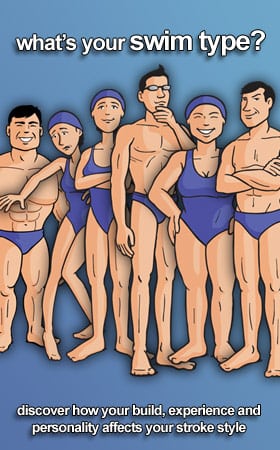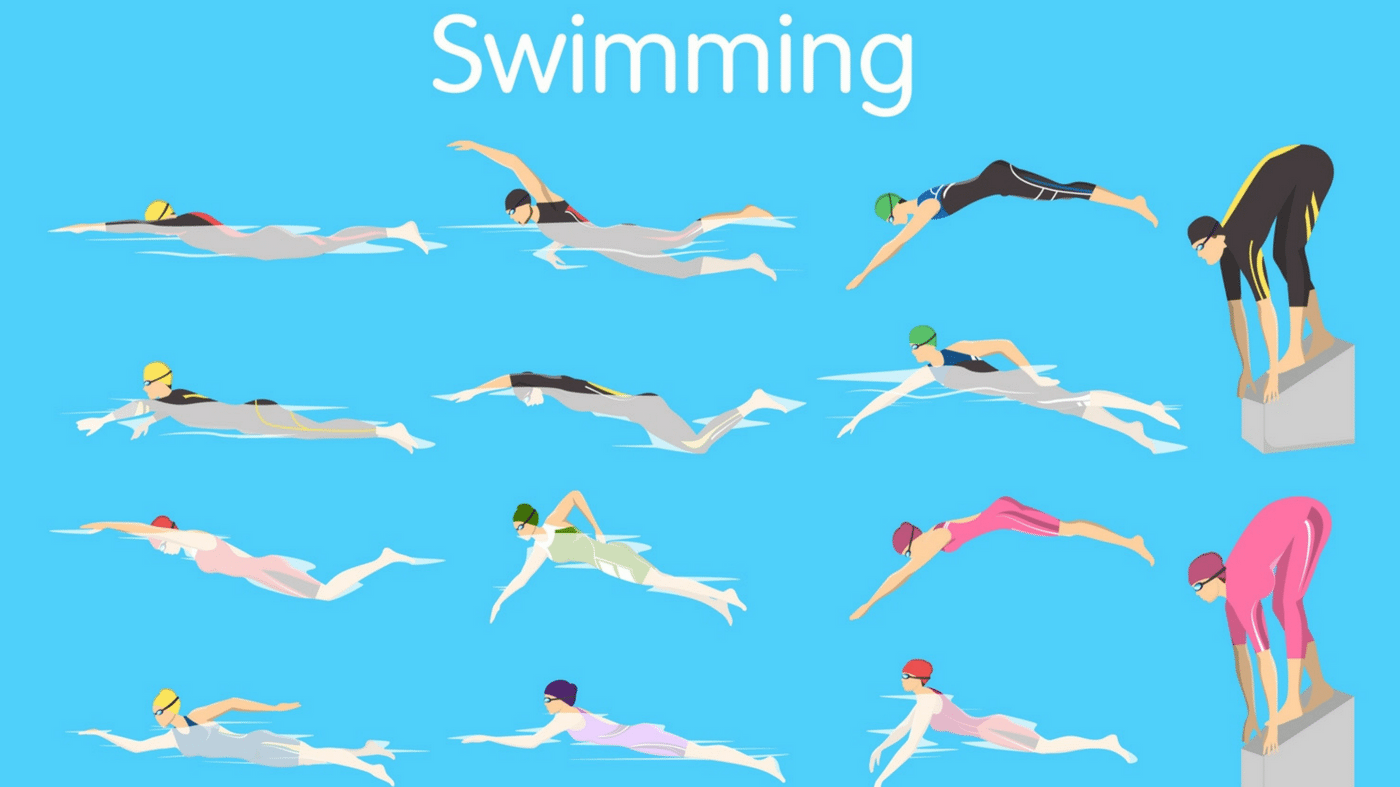February 7, 2011
The Problem With “One-Size-Fits-All” Swimming

No matter what their level or experience, most swimmers and triathletes have trained or been coached to conform to an ‘ideal' irrespective of their sex, build characteristics, previous swimming experience and personality. This approach is very much “one-size-fits-all”, and it is severely flawed approach to both learning swimming and becoming a better, faster swimmer.
For a very long time in mass market swim coaching, a simple message has been sold – make your stroke long and gliding. As we'll explain in this article, this overly simplistic approach limits the achievements of most swimmers and makes things harder than they need to be for that majority.
Meanwhile, the very best coaches in the world have taken a very different approach – they tailor the strokes of their swimmers and triathletes to their own unique attributes. This is why many of the best swimmers in the world swim with significantly different strokes – but they all move very efficiently through the water.
If you study swimmers of all abilities, initially it appears that everyone swims completely differently to each other with their own unique style. Strictly speaking, everyone's stroke is unique. However when you study a lot of swimmers you easily see that stroke characteristics can be clumped together into just six basic styles of swimming…
…more specifically, every swimmer, everywhere, no matter what their level of experience, can easily be classified into one of the six different Swim Types.
The Six Different Swim Types
‘Swim Typing‘ is based on six fundamental styles – or types – of stroke. Each type is distinct with different underlying stroke issues. A deeper understanding of each type is contained in on the Swim Smooth website, in Swim Smooth's Stroke Correction Guides. These guides – one for each type – give you the understanding, techniques, drills and training sessions you need to improve your swimming. But here's the basic overview of the six types (a very detailed profile and swimming video of each Swim Type is available by clicking here and visiting the Swim Smooth website).
The Arnie is often male, of strong build and commonly with a background in team sports such as football and rugby. The female ‘Arnette' is less overtly muscular but otherwise has very similar attributes. Their lean muscle mass and limited upper-body flexibility gives them very sinky legs when swimming. This means that one of their primary areas of focus needs to be improving their body position.
The Bambino is often but by no means always female, of small to light build with limited swimming experience. Co-ordination in the water is a key concern and learning to improve their rhythm, timing and catch will really aid this. In terms of limited experience, the Bambino is equivalent to The Arnie but with a distinctly different temperament and much lower power.
The Kicktastic is often but not always female with some swimming experience, often from earlier childhood. Their stroke is characterised by a very dominant and propulsive leg kick but lacks catch and feel for the water with their arm stroke. As kicking is a relatively inefficient method of propulsion, and uses very large muscle groups, this swimmer is often short of breath. For sprint freestyle a strong kick is expected but over longer distances the very high oxygen demand makes it far from ideal. It is better to divert that energy into the arm stroke for greater propulsive efficiency. Kicktastics vary hugely in speed depending on the propulsion level from their kick and their level of feel for the water with their arm stroke.
The Overglider can be male or female but with one common trait – a very conscientious approach towards developing their swimming technique! Their stroke is typically long but contains too much glide and has a distinct dead-spot within its timing.
The Swinger nearly always has good swimming experience over a long period of time and feels confident in the water. The key characteristic of the swinger compared to the Smooth type is that they have less body roll, meaning their arms tend to swing round the side of the body rather than travel over the top. Over the years some bad habits may have crept in and their stroke is often in need of a tune up.
The Smooth can be male or female and has an excellent swimming background. They appear to be perfect in the water and to exert very little effort whilst cruising past their opponents. Their stroke may require just a few adaptations to perform at their potential in open water.
How Does This Make For A Better Swimming Technique?
Let's learn how Swim Typing can make you a better swimming by using a clear example:
Take Lucy, who we can say is a classic Bambino. She's quite short, has a light build and has only been swimming for three months. Like all Bambinos, she lacks a little confidence in the water.
Lucy has joined a swimming group and like many swimmers we know has been told by the coach that unless she can swim 40 strokes per 50m she may as well give up! This is equivalent to about 18 strokes per length in a 25m pool – taking account of the push off. Lucy tries to swim with a longer stroke, reaching out and gliding but with her limited feel for the water and short arm length finds this nearly impossible.
Maybe you've had this experience too in a group or squad – it's dejecting isn't it?
For Lucy, with her low swimming confidence, this experience is shattering.
For the tall, skilled Smooth Swim Type, 40 strokes per 50m is a realistic goal and could be an ideal stroke length for them. However, the pathway to improvement for a Bambino is a lot different:
Rather than slowing their stroke and trying to glide, a Bambino benefits greatly from adding a little punch and rhythm to their stroke. Lifting their stroke rate gives them a sense of stroke timing – and the faster movements create more pressure on their hands and limbs – letting them feel what's going on. This builds their confidence and allows them to become attuned to their environment.
With her shorter arm length, Lucy is unlikely to ever swim at her optimum at 40 strokes per 50m but by improving her feel for the water and stroke rhythm, there's no reason why she can't become a very competent, fast swimmer.
This is just one example of how each swim type needs to approach their swimming in a significantly different way. Are you confident that the time, energy, drills and money that you have invested in your swimming is best suited to YOU and your individual body type and swim technique?
If not, you are in the right place now – finally!
The Swim Smooth ‘Swim Typing' Program:
The guys at Swim Smooth originally developed the Swim Type system to train swimming and triathlon coaches, but then they developed the system to work for just any ordinary person who wants to learn how to swim better or faster. Swim Types allows coaches to quickly identify a swimmer's type and then give them high quality, tried and tested methods to improve their stroke technique.
But Swim Typing isn't just for coaches.
By clicking here to take the Swim Typing questionnaire on the Swim Smooth website, then downloading the Swim Smooth's Stroke Correction Guides that is based on your Swim Type, anybody, no matter what their swimming level or experience, can instantly begin to develop a better, more customized swim program without any coaching whatsoever!
Are you ready to figure out what Swim Type you are, and then instantly learn what to do about it? Click here to get started now with the Swim Smooth Swim Typing system.
If you have comments or questions, please leave them below!


Ben, is this the place to post questions for the podcast? I have aquestion about loosing muscle mass and muscle memory. I trained 20 weeks for an Ironman and completed it last Aug, since then I have not been on my bike or swum at all, and have just started to pick up the running. As a 49 year old male, how much of the muscle mass and memory would I have lost?
Great show. Andy
cool post. I picked up a few tips just from reading through their swim types and taking the survey. turns out I'm a bit of a kicktastic and a swinger! Too bad its my recovery day, I'm ready to go back to the pool to try this stuff out ;`)